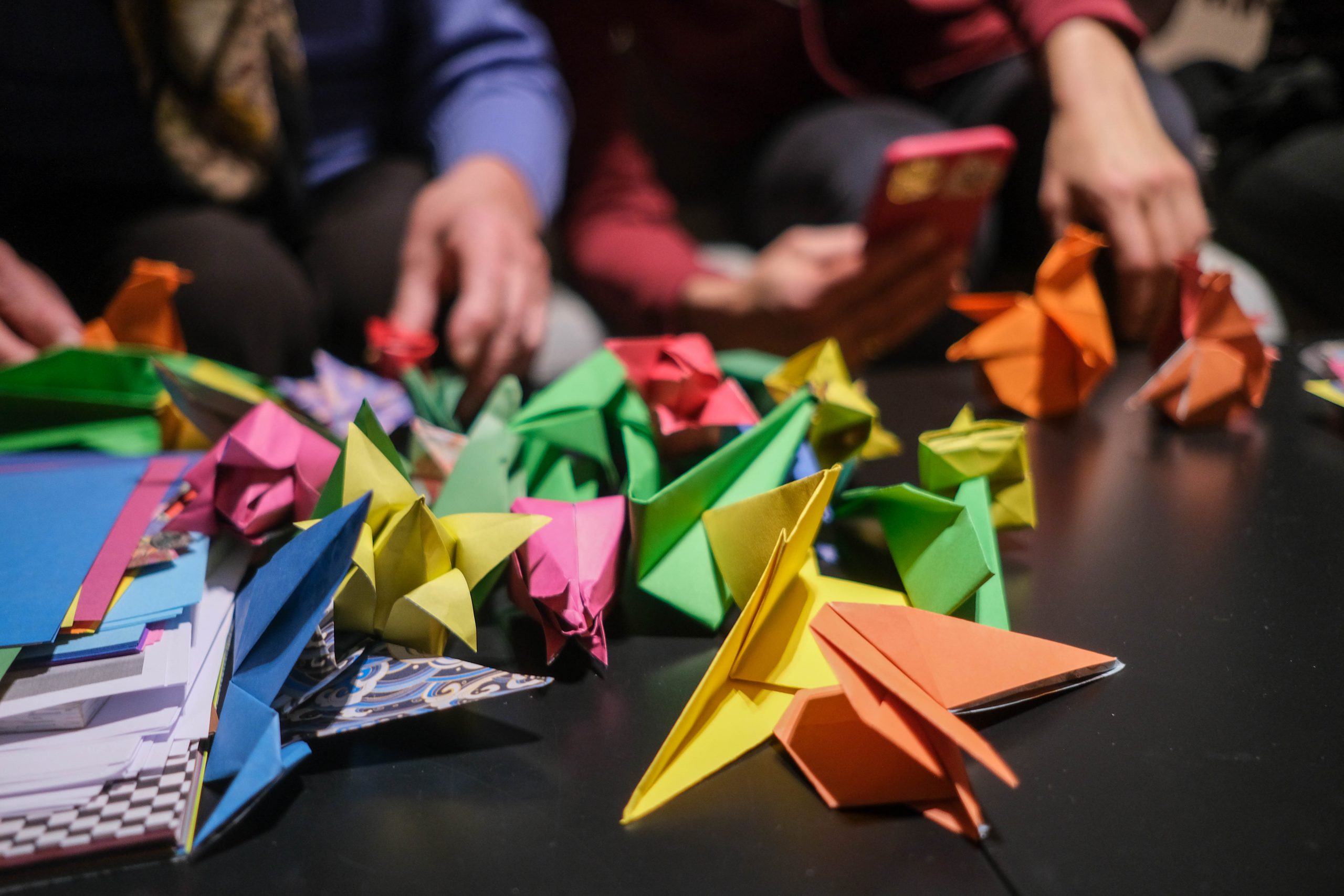Ethiopia: How Refugees Create Global Conversations with Art
06 September 2018
Between two mountain ranges in northern Ethiopia, dozens of young Eritrean refugees are splattered in paint. They spend their days expressing their longing for lost loved ones, traumatic memories of persecution, and stories of family and friends who have taken perilous journeys across deserts and seas in symbolic artwork.
Mebrahtu, their 45-year-old teacher, encourages them to create art that inspires social change. “Painting keeps history alive, transmits information from one generation to another, and expresses ideas and feelings. These paintings raise awareness and can prevent others from tragedy. There is nothing better than creating conversation,” he said.
At home in Eritrea, many of the painters fled grave human rights abuses, ranging from torture to forced military conscription. Upon fleeing to Ethiopia they have been given one option: settle in camps for an indefinite amount of time. They are provided with basic education, healthcare and housing, but opportunities beyond camp life are slim to none.
With restrictions on employment and limited higher education opportunities, many feel they have a bleak future ahead of them and decide to attempt the most precarious migration route in the world. They traverse the Sahara or Sinai deserts and the Mediterranean Sea to reach European or Middle Eastern countries. Other Eritreans bypass the Ethiopian camps altogether, moving north through Sudan immediately after escape.
They all hope the slight chance for a new life will validate the inevitable risks of torture, trafficking, and death along the way. For those who reach their destination, the future they hoped for is far from reality. Restrictive policies across Europe exclude many refugees from contributing their skills to society. Those left behind in Ethiopia’s camps spend their time chatting with loved ones who made it on social media or mourning the lives of those who did not. These painters illustrate their stories on behalf of the people they cherish with the hope that their art will lead to concrete change.
“Many people have learned from my paintings. Some cry when they see them and understand the difficulties that come on the journey. These can save them by creating an understanding that the risk is not worth it,” said Filmon, a 16-year-old painter. In addition to preventing their fellow refugees from taking dangerous routes, Filmon and the other artists hope their work will also inspire policymakers and world leaders to pursue policies that allow refugees to live and move in more dignified ways.
The JRS campaign Artists in Motion allows these painters to exhibit their art and messages to people around the world – especially people with the ability to effect change and create sustainable, dignified solutions to a global, unprecedented phenomenon of forced migration. We welcome you to follow this campaign, share these paintings and use the painters’ messages to advocate on their behalf.


